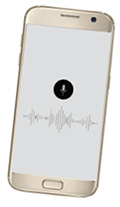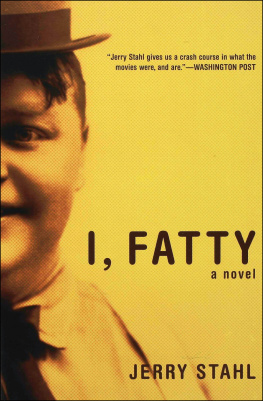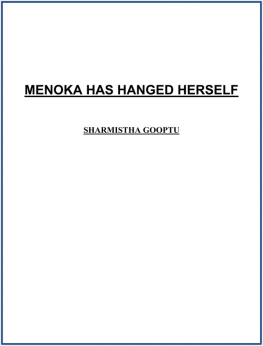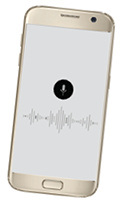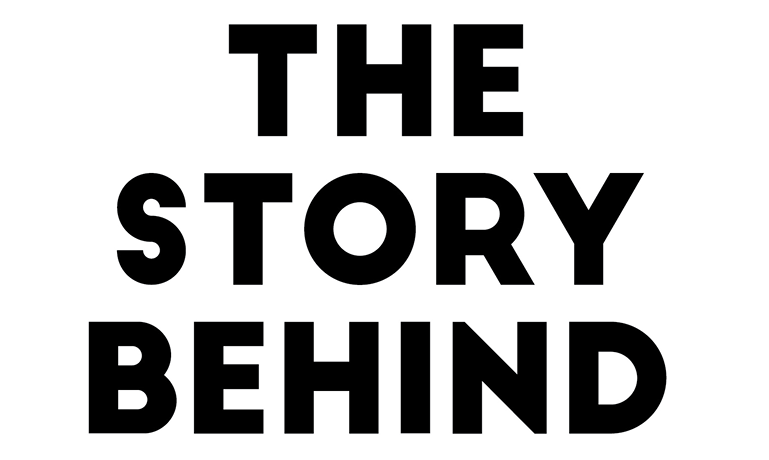
Copyright 2018 Emily Prokop.
Published by Mango Publishing Group, a division of Mango Media Inc.
Cover and Layout Design: Elina Diaz
Mango is an active supporter of authors rights to free speech and artistic expression in their books. The purpose of copyright is to encourage authors to produce exceptional works that enrich our culture and our open society.
Uploading or distributing photos, scans or any content from this book without prior permission is theft of the authors intellectual property. Please honor the authors work as you would your own. Thank you in advance for respecting our authors rights.
For permission requests, please contact the publisher at:
Mango Publishing Group
2850 Douglas Road, 3rd Floor
Coral Gables, FL 33134 USA
For special orders, quantity sales, course adoptions and corporate sales, please email the publisher at or +1.800.509.4887.
The Story Behind: The Extraordinary History Behind Ordinary Objects
Library of Congress Cataloging
ISBN: (print) 978-1-63353-828-3 (ebook) 978-1-63353-829-0
Library of Congress Control Number:
BISAC category code: REF023000REFERENCE / Trivia
Printed in the United States of America
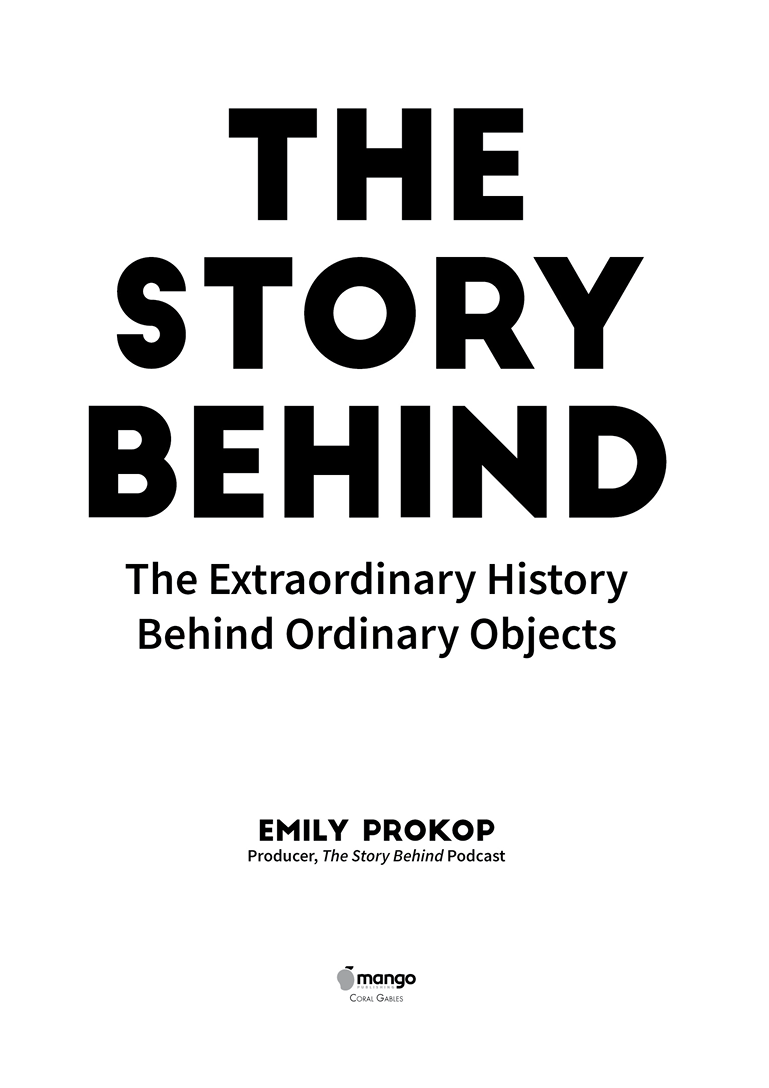
To Layla and Cameron:
May you always remain as curious as you are now about the world around you.
Contents
Introduction
Call it curiosity. Call it distraction. Call it ADHD. But Ive always found it difficult not to wonder about the history of the things around me. When the I got the internet in my teenage years, a whole new world opened up to me. Sure, I had the library before, but I wanted answers to my questions and I wanted them now.
You may be looking at this book and wondering if you might feel the same way. Maybe you dont consider yourself a fan of historyI know I never did, aside from the few history teachers in high school who found a way to make it interesting. I was never good at remembering dates or even locations (I should probably list our Google Home as a co-author for answering me all those times I had to check the years of a particular battle or era). But what did stick in my head was triviathe details that made history fun and exciting to me.
While Im no expert, I did love talking about the trivia I learned, usually during dinner-party conversations when my socially awkward self couldnt hold back the latest new piece of information Id learned or some fascinating anecdote Id come across. Luckily, podcasting existed, so I got to spout off all the random trivia that had been swirling in my brain for years into my show, The Story Behind .
Every week, I seemed to stumble across something new and want to share it with people, or I would choose something as simple as a paper clip and, seemingly out of nowhere, find myself in a Google rabbit hole investigating its origins.
Some of the research in The Story Behind may seem a bit scattered, but thats because not everything has the very basic story were familiar with of white guy invents this, makes millions. I like looking at the thought process the inventors may have had, or even how things were before their inventions.
Many times, there are objects that are impossible to really find the history of, but the theories and educated guesses are just as fun to talk about, and so I included a few.
Millennials/Gen-Xers like me (apparently Im part of a micro-generation known as Generation Oregon Trail) may feel like were living in quite possibly the worst timeline, where the economy is uncertain, politicians are lying to us, and it seems radical groups are running amok and gaining notoriety in the process. Sometimes, researching episodes of The Story Behind helps me keep in perspective all the advances in technology and how inventions like those mentioned in the book have made our lives better.
So lets dive into The Story Behind .
P.S.I wont be offended if you read it in the bathroom.
Part One:
At the Office

Bubble Wrap
When World War II soldiers returned from the war and got an education, thanks to the GI Bill, this helped them purchase houses. The country boomed, not only with new babies, but also with new homes being built. The 1950s saw a shift from more traditional decor to families looking to the future, with space exploration on the horizon and futuristic movies and television influencing style choices.
By that time, wallpaper had evolved from a luxury only the rich could afford to a more affordable commodity anyone could use to easily and quickly spruce up their walls. In 1957, Alfred W. Fielding and Marc Chavannes wanted to create a high-end plastic wallpaper. The main draw would be that the wallpaper was textured and would add a pop (pun totally intended) of fun to the walls.
In Fieldings garage, they sealed two plastic sheets together, creating air pockets trapped inside, and put a paper backing on it. Unfortunately, the design wasnt as popular as they had hoped, and the two inventors had this amazing material but no use for it. Originally, it was known as Air Cap, and Fielding and Chavannes formed the company Sealed Air to market it.
They first tried marketing it to greenhouses as a sort of cheap insulation, but it was difficult to market plastic for walls. Luckily, another futuristic innovation would help them use this material.
IBM premiered its new 1401 variable-word-length computer in 1959, but there was concern about the difficulty of shipping the new hardware without damaging it using the traditional shipping materials of newspaper, straw or horsehair.
Frederick Bowers, a marketer at Sealed Air, pitched the material to IBM, and finally a use was found for Bubble Wrap. (Bubble Wrap, by the way, is the trademarked name.) Sealed Air began expanding its product offerings to more shipping materials, such as envelopes made with Bubble Wrap padding, which became especially popular in the 1980s with the popularity of the floppy disk. (The first ones were actually floppy and easily damaged.)
The days of sealing two plastic sheets together were long gone, but, in 1957, a machine was made to produce the material with the bubbles evenly spaced. The machines used today are not that different, although there are more of them and they are much bigger than the original, which was the size of a moderately-priced sewing machine at the time.
The materials used now are more environmentally friendly, but still remain strong enough to reuse. However, newer shipping material is always being explored by companies like Amazon who ship huge quantities of items, since big rolls and sheets of Bubble Wrap take up a lot of storage space.
One question that comes up a lot with Bubble Wrap is about how to properly use it to package itemswith the bubbles out or in. The recommended way is having the bubbles facing inward to better pad the item being wrapped. It also helps keep small parts in place more effectively.
But what many consider Bubble Wraps best quality is the stress relief that comes from popping it. And that stress relief isnt just a theory. It was shown in a 1992 study that subjects who were given Bubble Wrap to pop were found to be more relaxed and alert afterward. A few theories exist as to why, including one in which our primitive brain associates the sensation with crushing ticks or insects, but the more plausible (and less gross) theory is that humans are drawn to tactile (touch) sensations, and using worry beads or fidget toys, or popping Bubble Wrap, can help us release that stress.
Next page
